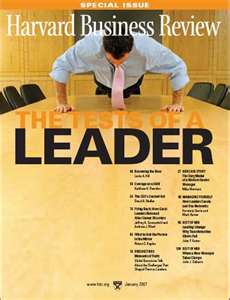Who did you picture? Perhaps a White, physically capable, probably straight, man? If you did, it’s not totally your fault. In part because there’s an image of one to the right.
As consumers of media, we’re regularly fed subtle and powerful messages of what executive leadership looks like. Bill Keller (right), former executive editor of the New York Times, was recently referenced in the New Yorker as follows:
With his square jaw, neatly parted gray hair, dark suit, and pocket kerchief, Keller on this day could have passed for what his father was, the chairman and C.E.O. of Chevron.
With this physical description, he’s a natural ringer for a chief executive of a global corporation making several billion dollars in annual profits, including last year?
The picture of Keller immediately continues, with a rub:
Yet when he stepped to the microphone his voice quavered, and he occasionally paused to restrain tears.
His bone structure, fine hair, and formal dress could link Keller to the role of multinational chief executive, yet he cried, so no behemoth conglomerate chairmanship for him!
The additional message suggests that powerful executive men don’t express tender emotions.
These ideas reach us in a place under the conscious level, and they sometimes come from an unconscious place in the writer. Is the New Yorker writer Ken Auletta aware of his myopic view of executive leadership?
This description of Keller comprises just a few sentences within a 10,000 word essay, so it’s easy to miss the underlying implications. It’s one of numerous written messages we take in regarding who’s fit for leadership in our society.
We get this message delivered in pictures, too.
One example: we look to the editors of the Harvard Business Review, whose work we value, making it painful to see that they perpetuate narrow notions of leadership too. Consider this cover of a special issue called The Tests of a Leader:
 According to this image, a leader is a physically fit White man who can hold a full plank position on a boardroom table.
According to this image, a leader is a physically fit White man who can hold a full plank position on a boardroom table.
Why?
Where are the women? Black people? Folks who use prostheses? Muslims? We want to see a Black lesbian woman in a wheelchair wearing a hijab serving as chair of a Fortune 50 company, and on the cover of a national business magazine. We say this provocatively, somewhat.
Over time, these subtle representations are harming everybody. For one, it’s an issue of making enough space for all people to exercise their whole selves, including their sophisticated leadership skills.
More important, though, is if we’re seeking innovative solutions to the difficult conditions the world continues to face, we need a diversity of voices. And differences in identity and physical appearance often relate to differences of perspective and behavioral style.
We realize the chief executive of the United States, President Barack Obama, is Black. Still, it behooves all of us to reveal our leadership abilities as part of the spectrum of our selves not only to realize our own full potential in the workplace, but to broaden the collective perception of what executive-level leadership looks like today.
Image of Keller via





Pingback: What Sheryl Sandberg Didn’t Say at Davos [video] | Whole Wide Work